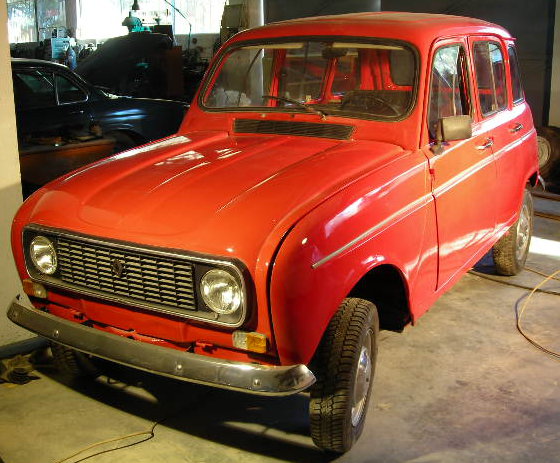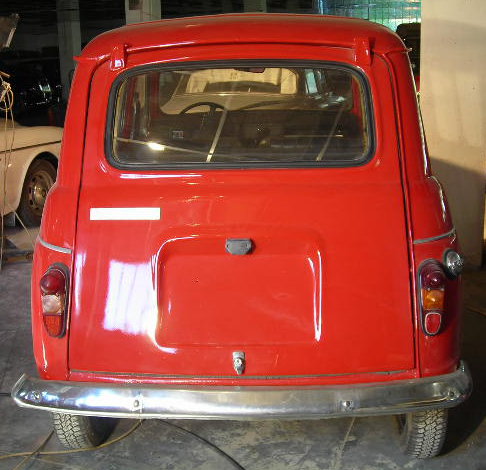Το μουσείο μας δέχθηκε 2 δωρεές αυτού του υπέροχου και μοναδικού αμαξιού. Πριν από αρκετά χρόνια από τον Γιώργο Φαλατάκη και πρόσφατα από τον Μαρίνο Σαρηγιάννη. Το πρώτο είχε πολύ σκουριά και δεν ανακαινίστηκε. Το δεύτερο, μολονότι είχε αρκετά χτυπήματα, δεν είχε σκουριά και ανακαινίστηκε. Είναι αυτό που βλέπετε μπροστά σας!Θερμές ευχαριστίες στον αγαπητό Μαρίνο από το πανεπιστήμιο του Ρεθύμνου, για το μωρό του…Αυτοκίνητο σύμβολο όπως και το 2CV., με εξαιρετική οδική συμπεριφορά, ιδιαίτερα πάνω στα χιόνια. Οταν βρισκόμουνα στην Ελβετία το 1979, χρησιμοποιούσα ενα 4L γιατί το δικό μου με το να είναι μεγάλο και βαρύ, γλιστρούσε πάνω στα χιόνια!
| Date of manufacture: | |
| Production Years: | 1961 – 1992 |
| Produced: | |
| Country of origin: | France |
| Manufacturer: | Renault |
| Designer: | |
| Engine capacity: | 747 cc |
| Power Output: | 29 hp ? |
| Top Speed: | |
| Price then: |
The Renault 4, also known as the 4L (pronounced “Quatrelle”), is a hatchback economy car produced by the French automaker Renault between 1961 and 1994. It was the first front-wheel drive family car produced by Renault. The car was launched at a time when several decades of economic stagnation were giving way to growing prosperity and surging car ownership in France. With the first million cars produced, on 1 February 1966, less than four and a half years after launch, it was a commercial success for Renault because of the timing of its introduction and the merits of its design: it was exceptionally spacious for its size, and is one of several models that pioneered the European popularization of the hatchback during the 1960s and 1970s.
1968 – 1974 Renault 4L: For 1968 the car received a more modern aluminium grill that it would retain till replaced, in 1974, by a plastic grill.
The Renault 4 was Renault’s response to the 1948 Citroën 2CV. Renault was able to review the advantages and disadvantages of the 2CV design and come up with a larger, more urban vehicle. In early 1956, Renault Chairman Pierre Dreyfus launched this new project: designing a new model to replace the rear engined 4CV that would become an everyman’s car, capable of satisfying the needs of anybody. It would be a family car, a woman’s car, a farmer’s car, a city car. It would also be suitable for motorists around the world.
Renault launched the model as the R4 in September 1961 with an engine capacity of 747 cc. A deluxe version with opening rear quarter-light windows and extra trimmings was offered. A less powerful version of the car, with a 603 cc engine, was marketed in France as the Renault R3 and discontinued in October 1962. De luxe and super versions of the R4L received a version of the engine from the Renault Dauphine giving them an engine capacity of 845 cc. The 747 cc R4 model continued to be listed with an entry level recommended retail price, but it was mostly the slightly larger engined L versions that found their way into customers’ hands. By 1965 Renault had removed the extra ‘R’ from their model names: the Renault R4L had become the Renault 4L.



